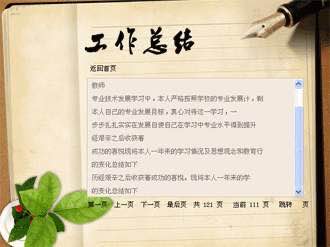PartBInthefollowingarticlesomeparagraphshavebeenremoved.ForQuestions66——70,choosethemostsuitable下面是小编为大家整理的2023年公共英语五级阅读模拟试【完整版】,供大家参考。

Part B
In the following article some paragraphs have been removed. For Questions 66 —— 70, choose the most suitable paragraph from the list A —— F to fit into each of the numbered gaps. There is one paragraph which "does not fit in any of the gaps. Mark your answers on ANSWER SHEET 1.
According to the American Academy of Dermatology, an estimated 10 to 50 million people in this country have an allergic reaction to poison ivy each year. Poison ivy is often very. difficult to spot. It closely resembles several other common garden plates, and can also blend in with other plants and weeds. But if you come into contact with it, you II soon know by the itchy, blistery rash that forms on your skin. Poison ivy is a red, itchy rash caused by the plant that bears its name. Many people get it when they are hiking or working in their garden and accidentally come into direct contact with the plant s leaves, roots, or stems. The poison ivy rash often looks like red lines, and sometimes it forms blisters.
1.
About 85 percent of people are allergic to the urushiol in poison ivy, according to the American Academy of Dermatology. Only a tiny amount of this chemical--1 billionth of a gram--is enough to cause a rash in many peo- ple. Some people may boast that they ve been exposed to poison ivy many times and have never gotten the rash, but that doesn t necessarily mean they re not allergic. Sometimes the allergy doesn t emerge until you ve been ex- posed several times, and some people develop a rash after their very first exposure. It may take up to ten days for the rash to emerge the first time.
2.
Here are some other ways to identify the poison ivy plant. It generally grows in a cluster of low, weed-like plants or a woody vine which can climb trees or fences. It is most often found in moist areas, such as riverbanks, woods, and pastures. The edges of the leaves are generally smooth or have tiny "teeth". Their color changes based on the season--reddish in the spring; green in the summer; and yellow, orange, or red in the fall. Its berries are typically white.
推荐访问: 五级 公共英语 模拟 公共英语五级阅读模拟试 公共英语五级阅读模拟试 公共英语五级阅读模拟试卷及答案 公共英语五级阅读模拟试题及答案 公共英语五级试卷
